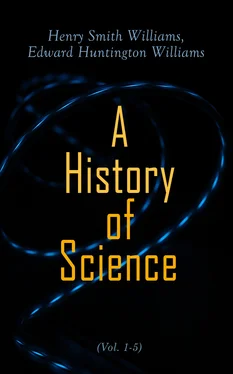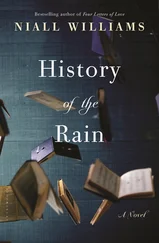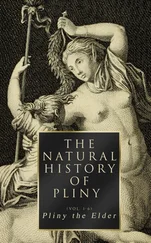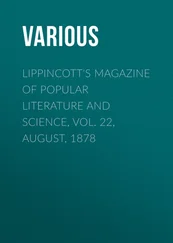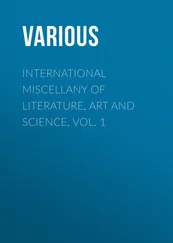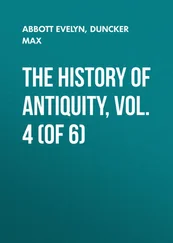But this find, interesting as it was from an archaeological stand-point, had no very important bearing on our knowledge of the literature of antiquity. Our chief dependence for our knowledge of that literature must still be placed in such copies of books as were made in the successive generations. Comparatively few of the extant manuscripts are older than the tenth century of our era. It requires but a momentary consideration of the conditions under which ancient books were produced to realize how slow and difficult the process was before the invention of printing. The taste of the book-buying public demanded a clearly written text, and in the Middle Ages it became customary to produce a richly ornamented text as well. The script employed being the prototype of the modern printed text, it will be obvious that a scribe could produce but a few pages at best in a day. A large work would therefore require the labor of a scribe for many months or even for several years. We may assume, then, that it would be a very flourishing publisher who could produce a hundred volumes all told per annum; and probably there were not many publishers at any given time, even in the period of Rome's greatest glory, who had anything like this output.
As there was a large number of authors in every generation of the classical period, it follows that most of these authors must have been obliged to content themselves with editions numbering very few copies; and it goes without saying that the greater number of books were never reproduced in what might be called a second edition. Even books that retained their popularity for several generations would presently fail to arouse sufficient interest to be copied; and in due course such works would pass out of existence altogether. Doubtless many hundreds of books were thus lost before the close of the classical period, the names of their authors being quite forgotten, or preserved only through a chance reference; and of course the work of elimination went on much more rapidly during the Middle Ages, when the interest in classical literature sank to so low an ebb in the West. Such collections of references and quotations as the Greek Anthology and the famous anthologies of Stobaeus and Athanasius and Eusebius give us glimpses of a host of writers—more than seven hundred are quoted by Stobaeus—a very large proportion of whom are quite unknown except through these brief excerpts from their lost works.
Quite naturally the scientific works suffered at least as largely as any others in an age given over to ecclesiastical dreamings. Yet in some regards there is matter for surprise as to the works preserved. Thus, as we have seen, the very extensive works of Aristotle on natural history, and the equally extensive natural history of Pliny, which were preserved throughout this period, and are still extant, make up relatively bulky volumes. These works seem to have interested the monks of the Middle Ages, while many much more important scientific books were allowed to perish. A considerable bulk of scientific literature was also preserved through the curious channels of Arabic and Armenian translations. Reference has already been made to the Almagest of Ptolemy, which, as we have seen, was translated into Arabic, and which was at a later day brought by the Arabs into western Europe and (at the instance of Frederick II of Sicily) translated out of their language into mediaeval Latin.
It remains to inquire, however, through what channels the Greek works reached the Arabs themselves. To gain an answer to this question we must follow the stream of history from its Roman course eastward to the new seat of the Roman empire in Byzantium. Here civilization centred from about the fifth century A.D., and here the European came in contact with the civilization of the Syrians, the Persians, the Armenians, and finally of the Arabs. The Byzantines themselves, unlike the inhabitants of western Europe, did not ignore the literature of old Greece; the Greek language became the regular speech of the Byzantine people, and their writers made a strenuous effort to perpetuate the idiom and style of the classical period. Naturally they also made transcriptions of the classical authors, and thus a great mass of literature was preserved, while the corresponding works were quite forgotten in western Europe.
Meantime many of these works were translated into Syriac, Armenian, and Persian, and when later on the Byzantine civilization degenerated, many works that were no longer to be had in the Greek originals continued to be widely circulated in Syriac, Persian, Armenian, and, ultimately, in Arabic translations. When the Arabs started out in their conquests, which carried them through Egypt and along the southern coast of the Mediterranean, until they finally invaded Europe from the west by way of Gibraltar, they carried with them their translations of many a Greek classical author, who was introduced anew to the western world through this strange channel.
We are told, for example, that Averrhoes, the famous commentator of Aristotle, who lived in Spain in the twelfth century, did not know a word of Greek and was obliged to gain his knowledge of the master through a Syriac translation; or, as others alleged (denying that he knew even Syriac), through an Arabic version translated from the Syriac. We know, too, that the famous chronology of Eusebius was preserved through an Armenian translation; and reference has more than once been made to the Arabic translation of Ptolemy's great work, to which we still apply its Arabic title of Almagest.
The familiar story that when the Arabs invaded Egypt they burned the Alexandrian library is now regarded as an invention of later times. It seems much more probable that the library bad been largely scattered before the coming of the Moslems. Indeed, it has even been suggested that the Christians of an earlier day removed the records of pagan thought. Be that as it may, the famous Alexandrian library had disappeared long before the revival of interest in classical learning. Meanwhile, as we have said, the Arabs, far from destroying the western literature, were its chief preservers. Partly at least because of their regard for the records of the creative work of earlier generations of alien peoples, the Arabs were enabled to outstrip their contemporaries. For it cannot be in doubt that, during that long stretch of time when the western world was ignoring science altogether or at most contenting itself with the casual reading of Aristotle and Pliny, the Arabs had the unique distinction of attempting original investigations in science. To them were due all important progressive steps which were made in any scientific field whatever for about a thousand years after the time of Ptolemy and Galen. The progress made even by the Arabs during this long period seems meagre enough, yet it has some significant features. These will now demand our attention.
II. MEDIAEVAL SCIENCE AMONG THE ARABIANS
Table of Contents
The successors of Mohammed showed themselves curiously receptive of the ideas of the western people whom they conquered. They came in contact with the Greeks in western Asia and in Egypt, and, as has been said, became their virtual successors in carrying forward the torch of learning. It must not be inferred, however, that the Arabian scholars, as a class, were comparable to their predecessors in creative genius. On the contrary, they retained much of the conservative oriental spirit. They were under the spell of tradition, and, in the main, what they accepted from the Greeks they regarded as almost final in its teaching. There were, however, a few notable exceptions among their men of science, and to these must be ascribed several discoveries of some importance.
The chief subjects that excited the interest and exercised the ingenuity of the Arabian scholars were astronomy, mathematics, and medicine. The practical phases of all these subjects were given particular attention. Thus it is well known that our so-called Arabian numerals date from this period. The revolutionary effect of these characters, as applied to practical mathematics, can hardly be overestimated; but it is generally considered, and in fact was admitted by the Arabs themselves, that these numerals were really borrowed from the Hindoos, with whom the Arabs came in contact on the east. Certain of the Hindoo alphabets, notably that of the Battaks of Sumatra, give us clews to the originals of the numerals. It does not seem certain, however, that the Hindoos employed these characters according to the decimal system, which is the prime element of their importance. Knowledge is not forthcoming as to just when or by whom such application was made. If this was an Arabic innovation, it was perhaps the most important one with which that nation is to be credited. Another mathematical improvement was the introduction into trigonometry of the sine—the half-chord of the double arc—instead of the chord of the arc itself which the Greek astronomers had employed. This improvement was due to the famous Albategnius, whose work in other fields we shall examine in a moment.
Читать дальше
